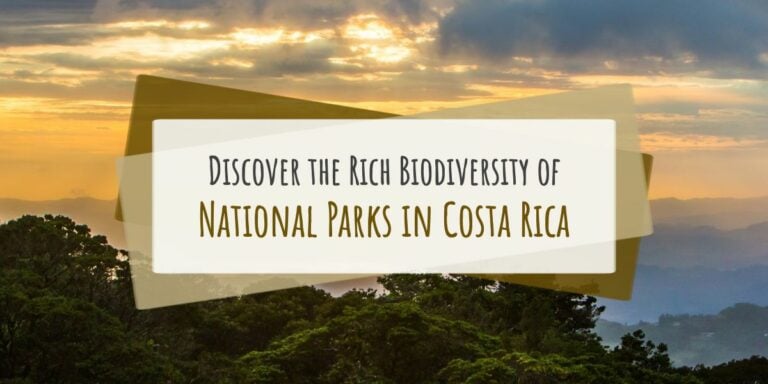Are you looking for an adventure that is immersed in breathtaking nature? Then Costa Rica, with its extensive collection of national parks, is the perfect destination for you to explore. With 28 national parks offering a wide variety of landscapes and ecosystems, Costa Rica is a playground for outdoor enthusiasts. Whether you want to trek through a lush tropical rainforest, hike up a volcanic mountain or relax on an unspoiled beach, Costa Rica has something for everyone. And the best part? All of these beautiful natural wonders are protected and preserved through the national park system. So, let’s dive in and discover the amazing national parks of Costa Rica.
Rules And Regulations
When visiting one of Costa Rica’s national parks, it’s important to be aware of all rules and regulations before arriving. All visitors must purchase an entrance ticket before entering any park; these tickets are available online or at the park itself.
Littering is strictly prohibited within each park – help keep Costa Rica clean by packing out whatever you bring in! Wildlife should also not be disturbed during your visit; stay on designated paths and don’t feed animals as this could disrupt their ability to survive independently in nature.
Camping overnight requires special permits from the local government which may require additional fees depending on where you’re staying. Finally, certain activities such as hunting and fishing are forbidden in national parks – please respect wildlife while visiting them! With these simple guidelines followed, you’ll be sure to enjoy a safe and memorable experience exploring Costa Rica’s incredible national parks.

Tours And Guided Programs
Tours and guided programs are a great way to explore the beautiful national parks in Costa Rica. If you’re looking for an unforgettable experience, then look no further! Here is what you can expect when you embark on a tour:
- Certified guides will take visitors on private tours all over Costa Rica’s stunning natural landscapes.
- Naturalist tour guides provide amazing insight into the diverse wildlife of the region.
- Hiking tours offer breathtaking views of the incredible scenery.
Popular adventure combo tours can be found throughout Costa Rica as well – these packages combine multiple activities such as zip-lining, horseback riding, or kayaking with hiking trails so that tourists get the full experience. For something extra special, night tours led by experienced guides allow for up-close encounters with some of the area’s most interesting animals like sloths, frogs, and bats.
Costa Rica has plenty of amazing tours available to suit anyone’s interests and needs; whether it’s a peaceful hike around one of its many nature reserves or an adrenaline-pumping excursion through rainforests and rivers – there’s something out there for everyone! With this variety of options, it’s easy to see why people flock to Costa Rica year after year to enjoy its world-renowned beauty.
Popular National Parks
Costa Rica is home to some of the most stunning national parks in Central America. Corcovado National Park, located on the Osa Peninsula, offers a plethora of activities that will satisfy any nature enthusiast’s wildest dreams. From spotting sloths and monkeys to exploring its lush rainforests, this park has something for everyone.
Guanacaste National Park
As if time had stood still, Guanacaste National Park captivates the soul with its majestic beauty. Located in north-western Costa Rica, this immense park is home to a wide variety of flora and fauna making it one of the most biodiverse places on Earth.
The majestic Guanacaste National Park serves as a nature highway, seamlessly linking the Cacao and Orosi volcanoes with Santa Rosa National Park. Every year, countless critters migrate from the arid forest to the lush rainforest, thanks to this incredible biological corridor.
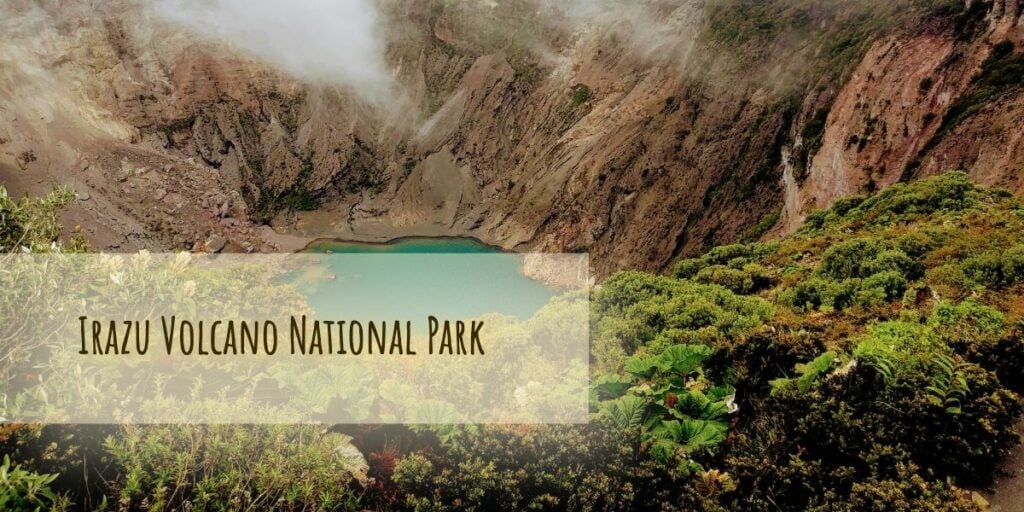
Irazu Volcano National Park
Irazú Volcano National Park is a must-visit destination for any trip to Costa Rica. Lucky for tourists, it is located just 30 kilometers from Cartago, the country’s former capital city, making it one of the easiest national parks to reach in the country. Despite its accessibility, visitors can still experience the majestic wonder of the Irazú volcano in all its natural glory without spending too much time getting there.
At 11,260 feet tall and 500 square kilometers at its base, the Irazú volcano is the highest active volcano and the largest in Costa Rica. Visitors to the national park can expect to witness the impressive sight of the volcano itself, which is sure to leave a lasting impression. The surrounding landscape in the park is just as remarkable, with the flat and bare terrain providing a striking contrast to the lush rainforest on the Caribbean side of the volcano.
The volcanic activity has created an environment in the park where the soil is highly fertile due to the volcanic ash. However, the harsh conditions at the volcano’s peak make it difficult for plants to thrive. Only those which are acclimated to the conditions can survive. As for animals, few can be spotted in the national park due to the volcanic activity. But visitors can still expect to see robins, owls, hummingbirds, porcupines, rabbits, coyotes, and foxes, adding to the unique experience of visiting Irazú Volcano National Park.
Rincon De La Vieja National Park
Rincón De La Vieja National Park is one of the must-visit national parks in Costa Rica. The park is located approximately 15 miles northeast of the capital of the Guanacaste Province, Liberia. It is over 34,000 acres in size and boasts two volcanoes, 32 rivers and streams, and a diverse range of flora and fauna.
One of the main draws of Rincón de la Vieja is the opportunity to enjoy a range of outdoor activities. Visitors can hike through the park’s lush forests, swim in the park’s rivers and waterfalls, and even enjoy hot springs. Picnicking is also a popular activity, and visitors can find plenty of scenic spots to relax and enjoy the park’s serene atmosphere. However, it is important to note that some activities may be closed due to volcanic activity, such as camping or hiking to the summit.
In addition to its natural beauty, Rincón de la Vieja National Park is also unique in its location. Because it spans both the Caribbean and Pacific sides of the Cordillera de Guanacaste, visitors can experience two different sides of the region.
Santa Rosa National Park
Santa Rosa National Park is a must-visit destination for nature enthusiasts who want to explore the rich history and biodiversity of Costa Rica. Located about 36 kilometers north of Liberia on Route 1, in the northern Guanacaste Province, the park covers an area of approximately 495 square kilometers. It is considered a part of the Area de Conservación Guanacaste World Heritage Site and is also part of the larger national Guanacaste Conservation Area.
One of the main reasons for the creation of Santa Rosa National Park was to protect the scene of the Battle of Santa Rosa, which took place on March 20, 1856. The battle was fought between the forces of Costa Rica and those of Nicaragua, led by an American soldier named William Walker. Walker believed in slavery and wanted to conquer the five free nations of Central America. In response, the president of Costa Rica, Juan Rafael Mora Porras, declared war against Walker and Nicaragua.
Today, visitors can explore the site of this historic battle and learn about its significance to Costa Rican history. In addition, the park offers a diverse range of landscapes, from tropical dry forests to mangrove swamps and pristine beaches. Visitors can also observe a wide range of wildlife, including howler monkeys, white-tailed deer, and sea turtles.
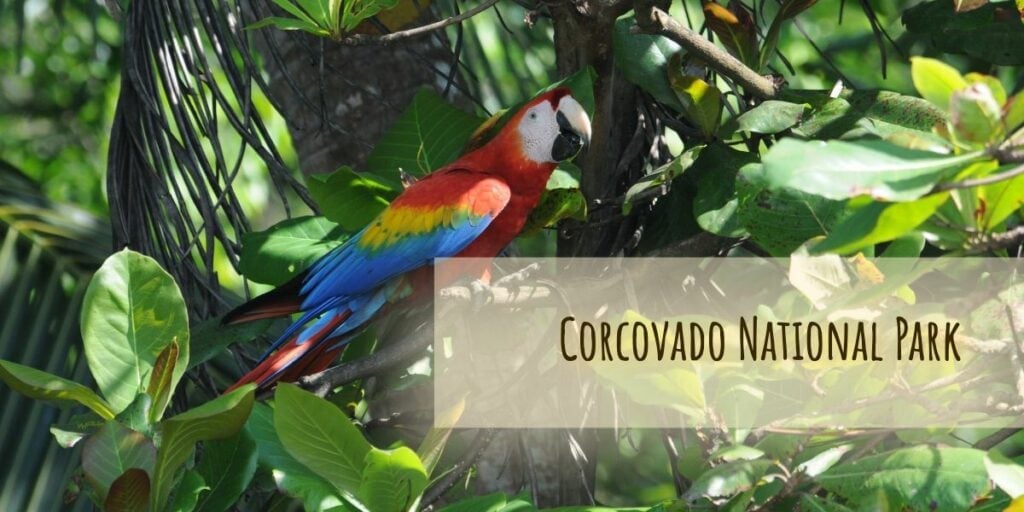
Corcovado National Park
Moving on from Santa Rosa National Park, let’s explore Corcovado National Park. This park is located in the Osa Peninsula and boasts some of the most impressive flora and fauna of any Costa Rican national park. It covers an area of over 105,168 land acres and 8,288 marine acres. It’s one of the few remaining areas where all four species of Costa Rican monkeys can be found living together peacefully.
The wildlife here is spectacular: anteaters, ocelots, jaguars, pumas, white-faced capuchin monkeys, scarlet macaws, and numerous other bird species are just a few that you might spot while visiting this amazing place. You may also have the chance to see dolphins or even whales depending on when you visit. The scenery at Corcovado is breathtaking with lush rainforest covering much of its terrain as well as several pristine beaches along its coastline.
La Amistad International Park
La Amistad International Park is a nature reserve that spans 991,000 acres. It is protected by Panamá and Costa Rica and is home to unique plant and animal species. UNESCO named it a World Heritage Site in 1983 due to its remarkable biodiversity. It’s a must-visit destination for outdoor enthusiasts.
Explore the park’s mountain trails to see unique wildlife. Look for the rare Quetzal bird, revered by the Mayans and Aztecs. Spot big cats like pumas, jaguars, margays, and ocelots, as well as sloths, monkeys, and the endangered tapir. With over 600 bird species, there’s plenty to see.
Baru Volcano is the tallest point in Panamá. Trails provide stunning views. A hiking guide is recommended to fully explore the park. Trails are abundant but not well marked, so getting lost is easy. Be prepared for varying temperatures due to microclimates. Camp at La Amistad International Park for a few days to fully enjoy the amazing nature.

Tortuguero National Park
Tortuguero National Park is a must-see destination for nature lovers visiting Costa Rica. Its most famous attraction is the turtle nesting season, which runs from July to October every year. Three different species of turtles nest on the beaches of the park: green sea turtles, leatherbacks, and hawksbills. The green sea turtles were once in danger of extinction due to hunting and poaching, but conservation efforts have helped to bring their population back up.
The park is located in the northeastern part of Costa Rica and is part of the Tortuguero Conservation Area. Despite being remote and only accessible by airplane or boat, it is the third-most visited park in the country. This is because of the park’s diverse range of habitats, which includes rainforest, mangrove forests, swamps, beaches, and lagoons. Visitors can explore the park on foot, by boat, or by kayak.
The park’s climate is tropical and very humid, with up to 250 inches of rainfall per year. This creates a lush and vibrant ecosystem that supports a wide range of flora and fauna. In recognition of its ecological importance, Tortuguero National Park was designated a Ramsar Site in 1991. This means that it is a wetland of international importance that supports threatened species of plants and animals.
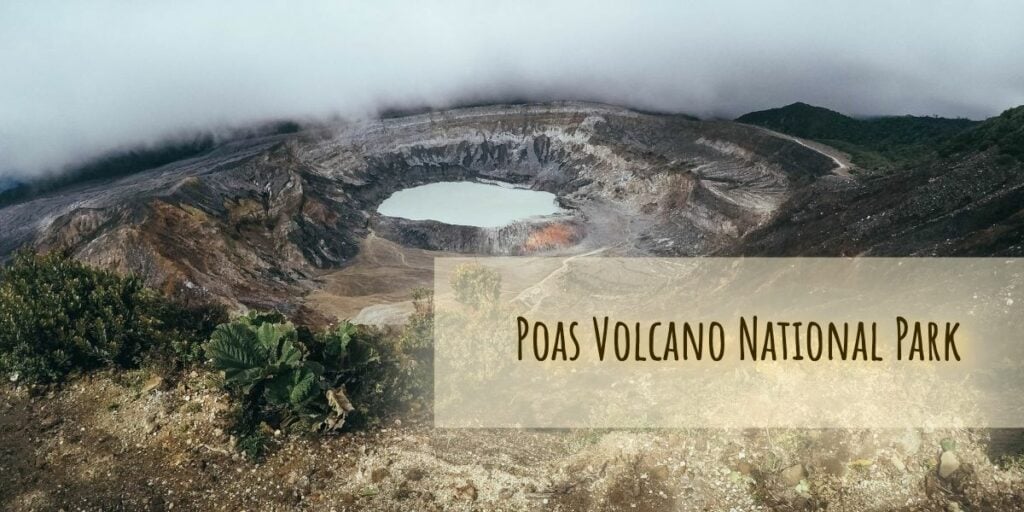
Poas Volcano National Park
Poás Volcano National Park is a paradise for outdoor adventurers. It’s like an oasis of lush green forests surrounded by the red-hot glow of active volcanoes.
Poás Volcano National Park is a must-see destination for nature lovers in Costa Rica. Although the roads leading to the park can be winding and mountainous, it’s worth the journey to experience the incredible beauty of the area. If you’re not up for driving, bus tours are available.
To make the most of your visit, it’s recommended to get to the park early, as the crowds of tourists can make it difficult to get a good view of the volcano. The park opens at 8 AM, so plan accordingly.
Clouds begin to form over the mountain starting at 9 AM, which can obscure the view of the volcano’s crater. To avoid missing out on the spectacular views, it’s best to arrive early and secure your spot in line.
For outdoor enthusiasts, Poás Volcano National Park offers the perfect blend of adventure and exploration. The lush green forests surrounding the active volcanoes create a magical oasis that visitors will never forget.
Carara National Park
After exploring Manuel Antonio National Park and taking in its breathtaking views, it’s time to venture on to Carara National Park. Located in the Province of Puntarenas, this park is home to some of Costa Rica’s most beautiful waterfalls—spectacular cascades that drop into deep blue pools surrounded by lush vegetation.
Once you arrive at Carara, you’ll be able to explore one of the world’s rarest habitats: tropical dry forests. This rich ecosystem provides refuge for many species including Scarlet Macaws, toucans, jaguars, and crocodiles. There are also numerous trails suitable for hiking or horse riding through old-growth mangroves where you can spot a variety of birds like parrots and great curassows.
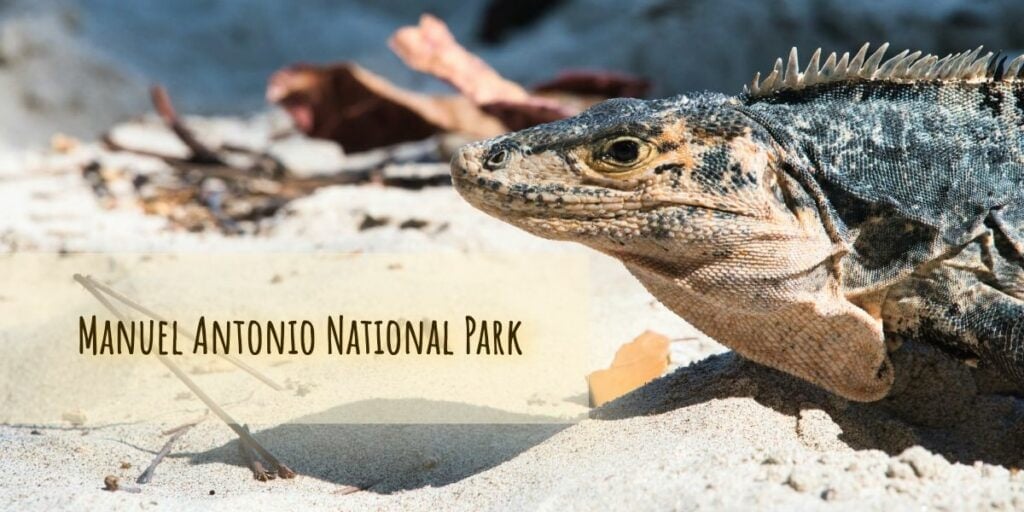
Manuel Antonio National Park
Manuel Antonio National Park is one of Costa Rica’s most beloved national parks. Located in the Central Pacific region, it was declared a natural park in 1972. This incredible paradise offers breathtaking views and captivating landscapes with its lush rainforests, white sand beaches, coral reefs, and numerous bodies of water.
This perfect habitat provides sanctuary for thousands of species including sloths, monkeys, iguanas, and more than 350 bird species. With stunning landscape features such as mangrove forests, lagoons, sandy beaches, rocky hillsides, and estuaries you can be sure that your visit will be nothing short of amazing. Tours are available so visitors can explore the area while learning about the conservation efforts being made by local authorities to protect this unique ecosystem.
Cahuita National Park
This picturesque park is located on the Caribbean coast of Costa Rica and it is known for its magnificent coral reefs. The park also features a variety of other attractions including beautiful beaches, mangrove swamps, and lush rainforests. Cahuita National Park provides visitors with an opportunity to observe the many species of wildlife living in the area, such as monkeys, sloths, iguanas, and numerous types of birds.
Tenorio Volcano National Park
Tenorio Volcano National Park is a popular destination in the northern region of Costa Rica. It is famous for its turquoise blue rivers, hot springs, and stunning views of the Tenorio Volcano. The park offers visitors a variety of activities such as hiking, camping, bird-watching, kayaking, and swimming in its crystal clear rivers. The area is also home to many species of animals including jaguars, pumas, sloths, and monkeys. Tenorio Volcano National Park provides visitors with an opportunity to explore the unique biodiversity of Costa Rica while admiring breathtaking landscapes.
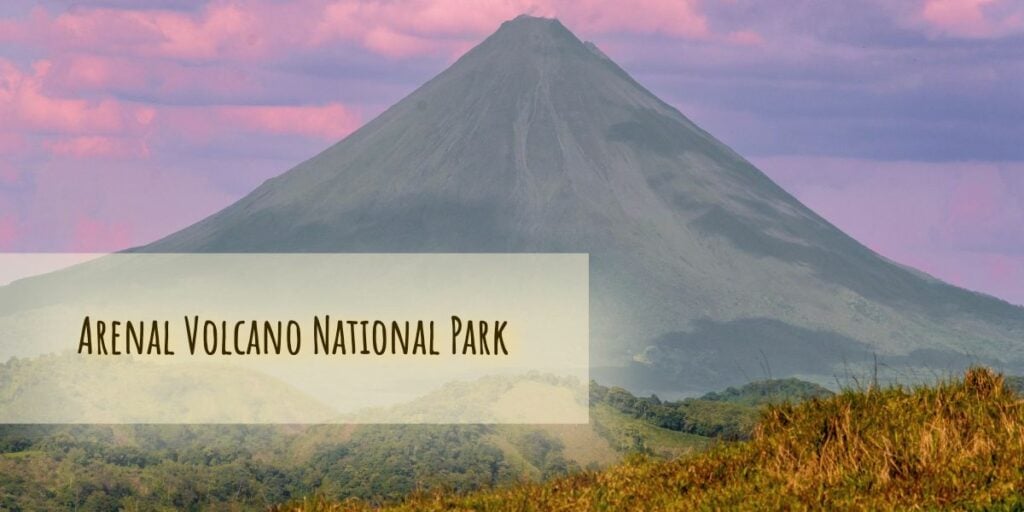
Arenal Volcano National Park
This national park is located in the northern part of Costa Rica and it’s known for its impressive volcano. Arenal Volcano stands at more than 5,300 feet tall and it’s one of the most active volcanoes in the country. Visitors can explore the area on foot and marvel at its dramatic lava flows, steam vents, and several hot springs that dot the volcano’s slopes. The park also features several trails that offer breathtaking views of the Arenal Volcano and its surroundings.
Marino Ballena National Park
Marino Ballena National Park is a protected marine park located in the southern Pacific region of Costa Rica. The park was established in 1992 and is situated on the Osa Peninsula.
The park is home to an abundance of coral reefs, sea turtles, and various other marine life. It also offers visitors the chance to explore the underwater world with its many diving spots, providing a unique experience for those who want to explore the beauty of Costa Rica’s tropical waters.

Monteverde Cloud Forest Reserve
This protected area is located in the province of Puntarenas near the continental divide. Monteverde is home to an astonishing array of biodiversity, including over 2,500 species of plants, more than 500 species of birds, and many rare animals like jaguars and howler monkeys. The reserve also features a series of trails that take visitors through the lush cloud forests and offer breathtaking views of the region’s unique biodiversity.
Best Time To Visit The Parks
Exploring Costa Rica’s national parks is an unforgettable experience, and knowing when to visit will make the most of your trip. Take for example Drake Bay on the Osa Peninsula in the southwest corner of Costa Rica – a popular destination for its lush rainforest, stunning wildlife, and rich biodiversity. It has two distinct seasons:
Dry season (December-April): Ideal time to view birds and animals as they come down from higher ground looking for water sources.
Wet season (May-November): Perfect timing if you’re hoping to see whales or dolphins swimming off the coast near Uvita National Park.
No matter what time of year you decide to visit Costa Rica’s national parks, one thing’s for sure: you’ll be mesmerized by its beauty! Whether it’s exploring hidden coves along the Pacific Coast or spotting monkeys hanging out in trees at Corcovado National Park – every moment spent here is a unique adventure that will leave you captivated. From abundant wildlife encounters to breathtaking views over turquoise waters – Costa Rica’s national parks offer something special no matter when you choose to explore them!
Frequently Asked Questions
How much does it cost to enter a national park in Costa Rica?
In general, entry into a national park in Costa Rica ranges from $15-30 USD depending on the season and location. It’s important to note that there may also be additional charges for activities like parking or boat rides if they are available at certain sites.
In addition to admission fees, there are other things to consider when visiting a national park in Costa Rica. For example, many parks require visitors to rent camping equipment such as tents and sleeping bags if they plan on staying overnight. Additionally, travelers should always check with local authorities before entering any protected area as regulations may vary from region to region.
The beauty of Costa Rican nature is worth every penny spent – but it pays off even more when travelers budget their time and money wisely!
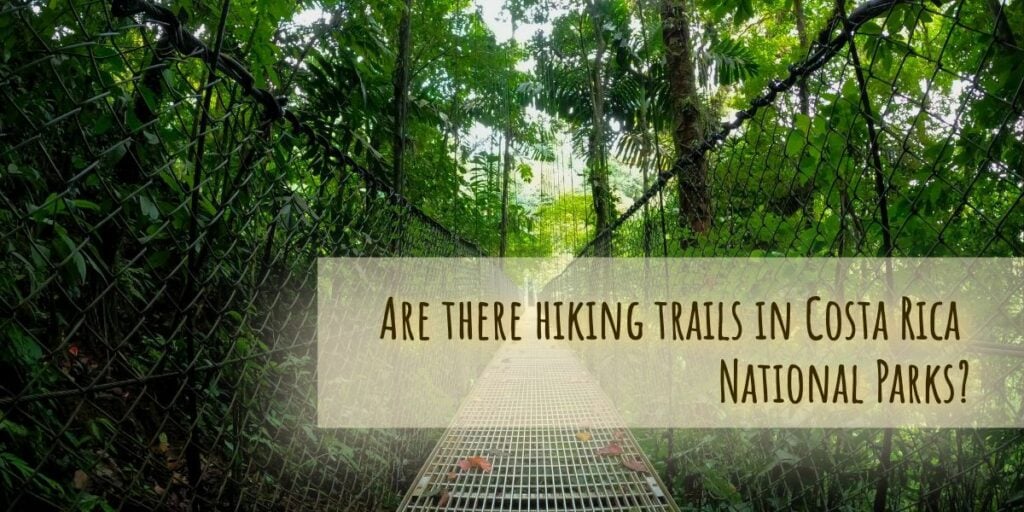
Are there hiking trails in Costa Rica National Parks?
Passionate explorers can rejoice, as Costa Rica is home to a plethora of national parks that boast an array of hiking trails. From lush rainforests to sprawling grasslands, the country’s diverse terrain provides endless opportunities for outdoor adventure. Whether you’re looking for a leisurely stroll through nature or a strenuous trek up a mountain peak, you can find it all in a Costa Rican National Park.
Not only do these hikes provide beautiful scenery but they also offer valuable insight into the history and culture of this region. As you make your way along winding paths, take note of ancient ruins such as petroglyphs or abandoned colonial structures scattered throughout certain areas. These artifacts serve as reminders of how long people have called this place home and give us pause to appreciate our environment even more deeply.
Is There Public Transportation To Access Costa Rica National Parks?
If you’re planning a trip to Costa Rica’s national parks, you might be wondering how you’ll get around without a car. Luckily, public transportation is a great option for travelers who want to save money and explore the country’s beautiful landscapes. Here are some reasons why using public transportation will make your trip more enjoyable.
First and foremost, public transportation is affordable. Renting a car or taking taxis can quickly add up and strain your budget. By taking the bus, you’ll save money and be able to stretch your travel funds further. Additionally, buses often offer discounts for students and seniors, making it an even more economical option.
Convenience is another advantage of using public transportation. Buses run regularly between cities and towns throughout Costa Rica, and many of them stop at popular tourist destinations like national parks. This makes it very convenient for travelers who don’t want to deal with the stress of driving or navigating unfamiliar roads. Plus, bus schedules are typically posted online so you can easily plan ahead for your journey.
Using public transportation also helps protect the environment. By reducing the number of cars on the road, we can cut down on air pollution and conserve natural resources like oil and gas. It’s a more sustainable way to travel, and it eliminates the stress associated with navigation since someone else will be doing all the work for you!
Conclusion
Overall, Costa Rica’s national parks offer a unique and unforgettable experience for all sorts of travelers. From the stunning scenery to the valuable insight into the country’s history and culture, these parks provide something special that can’t be found anywhere else. For those looking to explore this paradise without breaking the bank, consider taking public transportation – it will make your journey much more enjoyable and affordable. By visiting Costa Rican national parks, it is easy to see why so many people have fallen in love with this incredible corner of the world and why National Geographic coined Costa Rica as home to an extraordinary wealth of biodiversity.

